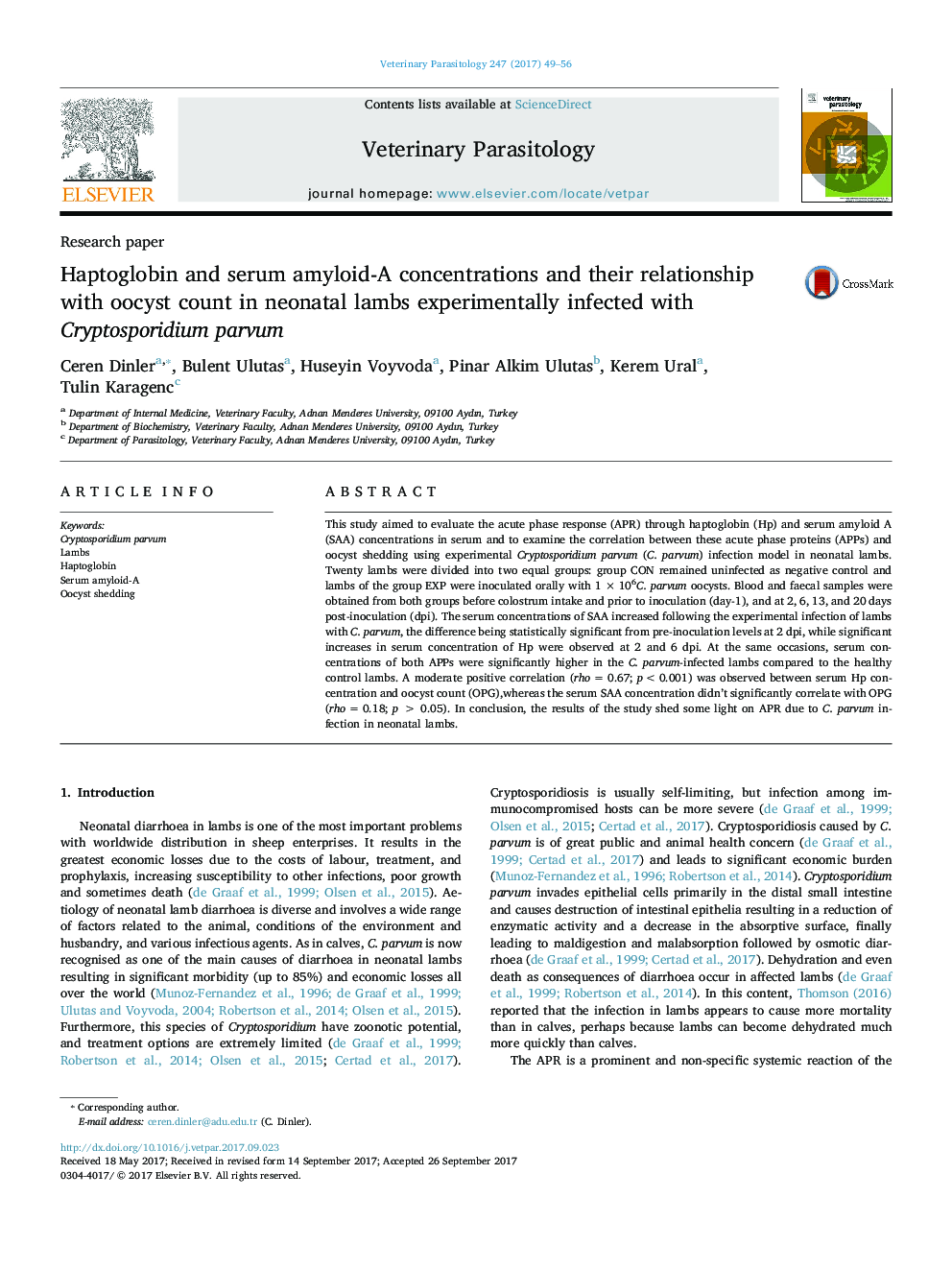| Article ID | Journal | Published Year | Pages | File Type |
|---|---|---|---|---|
| 5545525 | Veterinary Parasitology | 2017 | 8 Pages |
Abstract
This study aimed to evaluate the acute phase response (APR) through haptoglobin (Hp) and serum amyloid A (SAA) concentrations in serum and to examine the correlation between these acute phase proteins (APPs) and oocyst shedding using experimental Cryptosporidium parvum (C. parvum) infection model in neonatal lambs. Twenty lambs were divided into two equal groups: group CON remained uninfected as negative control and lambs of the group EXP were inoculated orally with 1 Ã 106C. parvum oocysts. Blood and faecal samples were obtained from both groups before colostrum intake and prior to inoculation (day-1), and at 2, 6, 13, and 20 days post-inoculation (dpi). The serum concentrations of SAA increased following the experimental infection of lambs with C. parvum, the difference being statistically significant from pre-inoculation levels at 2 dpi, while significant increases in serum concentration of Hp were observed at 2 and 6 dpi. At the same occasions, serum concentrations of both APPs were significantly higher in the C. parvum-infected lambs compared to the healthy control lambs. A moderate positive correlation (rho = 0.67; p< 0.001) was observed between serum Hp concentration and oocyst count (OPG),whereas the serum SAA concentration didn't significantly correlate with OPG (rho = 0.18; p > 0.05). In conclusion, the results of the study shed some light on APR due to C. parvum infection in neonatal lambs.
Related Topics
Life Sciences
Agricultural and Biological Sciences
Animal Science and Zoology
Authors
Ceren Dinler, Bulent Ulutas, Huseyin Voyvoda, Pinar Alkim Ulutas, Kerem Ural, Tulin Karagenc,
